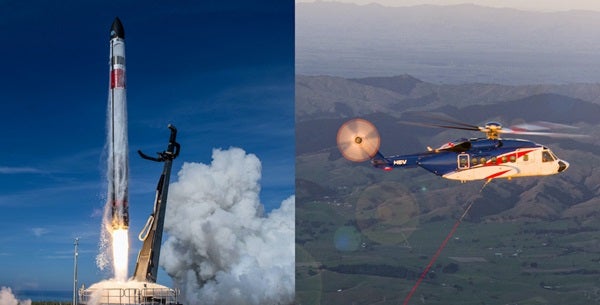Rocket Lab’s latest Electron mission successfully deployed 34 satellites into orbit this week. And as the rocket’s first stage booster parachuted back to Earth, the company used a helicopter to latch onto the parachute line. The helicopter pilots, not comfortable with how the booster felt beneath them, subsequently released the line, allowing the booster to safely splash down in the Pacific Ocean.
The mission, dubbed “There and Back Again,” served as a notable step toward Rocket Lab’s goal of retrieving boosters for reuse, which would help them increase their launch frequency and decrease costs, according to a Rocket Lab news release.
During Rocket Lab’s latest Electron mission, the company attempted to use a helicopter to catch the falling first-stage booster. Skip to 56:30 in the video above for the helicopter catch attempt.
During Electron’s 26th mission, a Sikorsky S-92 helicopter flew to an altitude of about 6,500 feet (2,000 meters) to meet the booster on its way down. To increase its drag and stability, the first stage deployed a conical-shaped parachute as it descended, soon followed by a larger main chute, which opened several feet above the rendezvous point with the chopper. After snagging the parachute line with a hook, the helicopter pilots ultimately opted to jettison the booster, which was recovered after a splashdown and taken back to the launch complex in New Zealand.
Although this was the company’s first attempted helicopter catch, during missions 16, 20, and 22, the company did successfully recover Electron’s booster after splashdown. Since it was established in 2006, Rocket Lab has launched a total of 146 satellites, which carry out jobs ranging from removing space junk to identifying light pollution to monitoring oceans and more.
The company expects another launch attempt to take place later this month.










